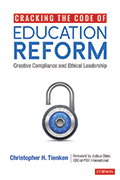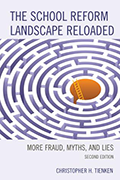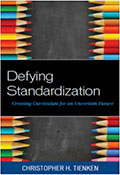CLAIMS
Charter schools are marketed to the public as incubators of innovation offering superior levels of student achievement and college and career readiness when compared to traditional public schools. Charter school expansion is supported by some policy makers and bureaucrats at the federal and state levels, as well as by some corporate leaders.
For example, comments like those made by U.S. Representative Buck McKeon are representative of the support shown by some federal policy makers: “We should incentivize charter school expansion at the state level while increasing awareness about the most effective strategies employed by charter schools, because charter schools rest on the pulse of education” (McKeon, 2011).
In New Jersey, charter school expansion has been embraced and supported by interest groups like the New Jersey Charter School Association (NJCSA). Representatives at the NJCSA claim, as do other proponents of charter school expansion, that charters offer superior academic benefits to children: “Across the country and in New Jersey, high-quality charter schools are making a difference. The schools are associated with higher math and English proficiency rates as well as greater chances for a high school diploma. Many high-performing charter schools have proven that no matter the race or socio-economic status of a student, all kids can and do achieve academically” (New Jersey Charter School Association, 2014).
Comments like those seem to suggest that New Jersey charter high schools produce superior results on important indicators of student achievement and college and career readiness than most public high schools in New Jersey. In this post I take a closer look at charter school SAT achievement.
SAT OVERVIEW
But what do the data suggest about charter high school achievement on the SAT Math and Verbal sections? Bureaucrats at the New Jersey Department of Education use mean SAT performance as indicators of how well high schools are preparing students to be college and career ready.
I created a table and some basic scatterplots to show how charter high schools in New Jersey compare on SAT results to public high schools that serve students in some of New Jersey’s wealthiest and poorest towns. My previous post (found here) presents SAT results for all high schools in NJ, including results for charters.
I drew SAT data for high schools according to their district factor groups (DFG). DFG is a categorization of districts based on multiple factors related to a basket of socio-economic indicators of a community and the community’s ability to financially support public education. High schools located in the “A” and “B” DFGs serve some of the state’s poorest communities, whereas high schools located in “I” and “J” DFG’s serve some of the state’s wealthiest communities. The majority of charter high schools are located in “A” and “B” communities.
It is well established that SAT, HSPA (NJ’s former HS exit exam), ACT, and all other scores from commercially prepared standardized tests are influence heavily by the socio-economic status of the students in the school and the demographic factors of the community in which those students live. However, some of the rhetoric surrounding charter school academic performance would lead one to believe that charters can “beat the odds” and overcome the deleterious effects of poverty and other socio-economic factors. However, the data suggest that this does not seem to be the case, across the board, in New Jersey.
Table 1 presents the mean SAT scores in Verbal and Math, plus the percentage of students eligible for FREE lunch (not Free and Reduced because the negative influence on achievement comes from FREE lunch eligibility), percentage of students who are limited English proficient (LEP) and the percentage of students with special needs for districts located in the A, B, (NJ’s poorest communities) and I, J DFG’s (NJ’s wealthiest communities), plus those for charter schools (denoted by an “R” on the scatter plots).
Table 1
Achievement and demographic characteristics of public high schools and charter high schools in selected DFG’s
The data suggest that the mean SAT results for charter high schools only exceed some of the high schools serving New Jersey’s poorest and academically neediest students, yet charter high schools do not service students with such needs, on average. The demographic makeup of charter schools is much less poor, less special needs, and less LEP compared to the demographics of the public high schools located in communities in which charter high schools operate.
DEMOGRAPHIC DIFFERENCES
The demographic data suggest that charter high schools serve a student population with poverty and special education characteristics somewhere between those served by high schools located in “A” or “B” communities.
In fact, charter high schools serve about 17% less children from poverty [eligible for FREE lunch] than do many of the public high schools from which charters take students. Charter high schools serve less LEP students than those even served by New Jersey’s high schools in the wealthiest communities, let alone the districts located in the poorest communities, yet charter high school operate in communities with high percentages of LEP students. The percentage of students with special needs served by charter high schools is also more representative of the public high schools serving the wealthiest towns. Overall, charter high schools, like charter elementary and middle schools serve different populations of students than their public school counterparts (See here).
Representatives from the New Jersey Charter School Association (2014) claim that charters serve all types of students: “Like most public schools, they are open to any child living within a certain district, including children with special needs.” (New Jersey Charter School Association, 2014).
COMPARISONS
If I use only the percentage of students eligible for FREE lunch, then the student characteristics from charter high schools would constitute an “AB” demographic profile: Less poor than students in public high schools located in an average “A” community and a little more poor than students in public high schools located in an average “B” community.
Given the positive rhetoric about charter schools being able to “beat the odds” one might expect their achievement profile on the SAT to be significantly higher than the achievement found in public high schools located in either “A” or “B” communities. Yet charter high schools underperform on the SAT Math & Verbal sections, on average, the mean SAT achievement of high schools in “B” communities and many of the public high schools, located in “A” communities
LET’S TAKE A LOOK
Figures 1 & 2 illustrate that charter high schools in New Jersey underperform almost all the high schools located in the B DFG and many of the high schools located in the state’s poor communities, the A DFG, especially when one compares schools based on their percentage of students eligible for FREE lunch (FRpct).
In Figure 1 notice how most of the mean charter high school SAT Math achievement is (purple circles “R”) lower than the most of the SAT Math achievement reported in the two DFG’s serving the poorest communities (DFG’s “A” and “B” – Blue & Red), and lower than the high schools located in the “J” and “I” DFG’s (wealthiest communities – Green & Yellow). The data suggest a similar pattern for SAT Verbal, as shown in Figure 2.
For example, in SAT Math, charter high schools that serve student populations with 60% or less of the students eligible for Free lunch (.60 FRpct), underperform the majority of public high schools with similar percentages of students eligible for Free lunch located in New Jersey’s poorest communities – the “A” and “B” DFGs (Blue &Red circles).
Figure 1: SAT M and Free Lunch Eligibility
The data suggest similar patterns of charter high school underachievement for SAT Verbal results shown in Figure 2.
Figure 2: SAT Verbal and Free Lunch Eligibility
The data suggest that charter high schools, as a group, are not overcoming the obstacles they claim to overcome and they are not accelerating the achievement of their students compared to most public high schools serving more or equally economically challenged groups of students. Their mean SAT achievement does not “break out” of their demographic trajectories. They perform a bit worse than their student demographics would suggest, and certainly do not produce superior achievement .
KNOW YOUR ROLE
Charter high schools might have a role to play in education, but the data suggest that an honest conversation needs to take place at the policy-making level regarding the ability of charter high schools to deliver on their promises of superior college and career readiness and about their student demographic characteristics.
Furthermore, the policy of “charterizing” urban school districts in New Jersey, currently being undertaken in Camden and parts of Newark and Jersey City needs serious reconsideration given the SAT data.





